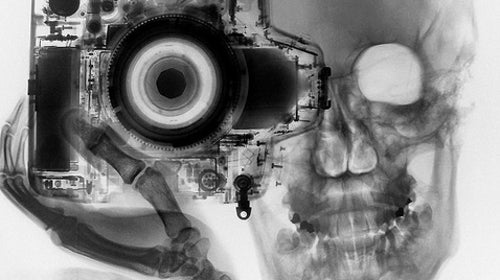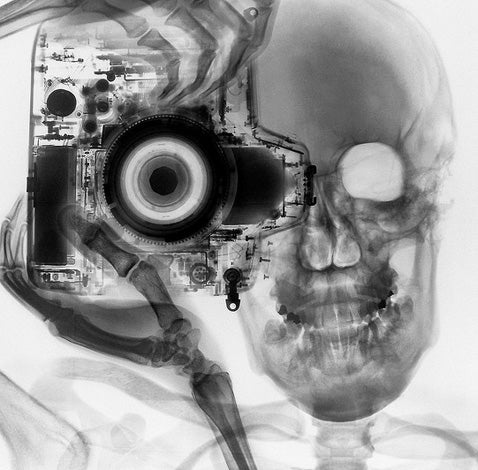The 14 Most Common Fitness Injuries…
Injuries suck. They hurt, they induce lethargy, and they’ve been . Fortunately, several studies have shown that the chances of getting felled by many of the common injuries listed here can often be reduced with neuromuscular training, strength exercises, and flexibility drills. found that a 20-minute warm up that included lessened the chances of suffering a lower extremity injury, such as an ACL tear or an ankle sprain, by almost 50 percent. True, some injuries, such as a cyclist’s broken collarbone, may require a heaping spoonful of luck to avoid, but a little prep can help prevent problems—from a hamstring strain to Achilles tendonitis.
Hamstring Strain
Keep this injury at bay with coordination and strength
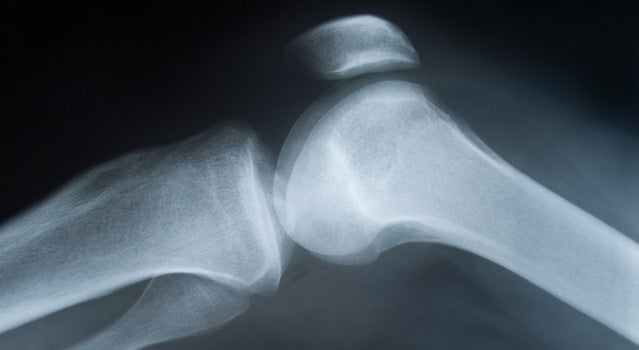
The injury:
The NFL funds for one simple reason: they are the number-one muscle tendon injury in the sport, accounting for more than 1,700 reported incidences between . Although most athletes return to their sports three to four weeks after the injury, one-third will re-injure their hamstrings within a year, according to published in The Journal of Orthopaedic and Sports Physical Therapy.
Hamstring injuries frequently occur for a few preventable reasons: strength imbalances and improper form. Athletes most often injure hamstrings when running close to or at their max speed, says Bryan Heiderscheit, lead author of the 2010 study, and an Associate Professor in the University of Wisconsin’s Department of Orthopedics and Rehabilitation. “As your speed increases and you start to lengthen your stride, you put greater loads on the hamstring muscles,” Heiderscheit says. That load is greatest right before your lead foot touches the ground, making that moment ripe for a rip.
How to prevent it:
The number one way to prevent straining a hamstring is to address any possible muscular weakness through strength exercises and neuromuscular training. Heiderscheit recommends Nordic Curls, standing deadlifts, and exercise ball curls. (See below for more information on how to perform these exercises.)
But hamstring strength is only part of the puzzle. That muscle’s strength relative to quad strength also plays an important role in injury prevention. A published in the British Journal of Sports Medicine found that sprinters are 17 times more prone to hamstring strains when their quad muscles were more than twice as strong as their hamstrings. Ideally, the muscles would be equal in strength, says Heiderscheit, but on average males have as their quads, while females hamstrings are 65 percent as strong. So what does all of this mean? Don’t skimp on hamstring strengthening.
Finally, it’s important for runners, in particular, to have someone check their form to make sure it doesn’t put them at risk for injury. “It’s helpful to get evaluated by a physical therapist or movement specialist to get feedback on timing, posture, and positioning to make sure the hamstrings aren’t doing the majority of the work,” Heiderscheit says.
3 Hamstring Strengthening Exercises
Hamstring exercises that strengthen the muscle while lengthening it at the same time (known as eccentric exercises), are thought to help protect hamstrings from injury, possibly by increasing the muscle’s ability to offset the quads’ concentric (strengthening while shortening) action. Here are three to try:
Nordic Curls
Kneel with on the ground and tuck your heels under a couch, or have a friend hold them down. Then slowly lower yourself to the floor without bending at the hips using your hands to catch you when your hamstrings can no longer do the work. to the starting position and repeat.
Standing Deadlifts
, touch your hands to the floor, then stand back up. You can add weight if you like, or stand on one foot to do one leg at a time.
Exercise Ball Hamstring Curls
Lay on your back with an exercise ball under your feet. and pull the ball toward your hips, then extend your legs and repeat.
ACL Sprain
Learn to fall
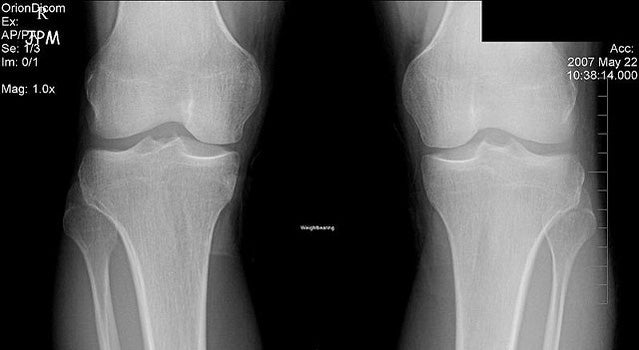
The injury:
ACL injuries rank as the number one ski injury, representing 17.2 percent of all injuries in the sport, according to published in the American Journal of Sports Medicine. More than damage their knees every year, and most of those injuries involve the ACL.
The ACL itself is one of four main ligaments in the knee, and its main role is to stabilize the knee during rotational movement. Rotating a knee too far to one side or the other, or hyper extending it, can tear or even rupture the ACL. Recovery time ranges from six weeks for a moderate sprain to six months or more for a rupture, which typically requires surgery to repair. showed that athletes suffer an ACL tear are seven times more likely to develop osteoarthritis in that knee than athletes who have not injured their ACL.
How to prevent it:
Unfortunately, two recent studies have shown that some people may have a genetic propensity toward injuring their ACLs. showed that people with ACL tears were more than twice as likely to have a first-degree relative who had torn an ACL. In 2009, found that women who had torn an ACL were more likely to have mutations in genes that produce collagen, the main building block of ligaments, causing their ACL’s to tear or rupture more easily, .
Still, there’s quite a lot that can be controlled, particularly when you ski. Carl Ettlinger, president of , has been studying ski safety since the 1960s and has authored dozens of studies on injuries and injury prevention. He says injury prevention boils down to three things: learning to fall correctly, having the proper equipment, and strength training.
“We are the product of millions of years of evolution without skiing,” Ettlinger says. “We haven’t developed the basic instincts to respond to falls with skis attached to our feet.”
Ettlinger has developed guidelines and tutorials to help skiers correct poor form and learn to fall properly. Keeping the hips above the knees and arms forward, for example, helps skiers to avoid falling backward, a situation that commonly leads to ACL injuries. For more information on proper technique, and how to reduce the risk of getting injured on the slopes, .
Advances in equipment, most notably in binding release mechanisms that respond to twisting forces, have helped reduce ACL injuries on the slopes. touts itself as the only binding with a lateral release that responds to twisting pressures. Ettlinger himself is currently working on a platform designed to respond to ACL-injuring forces.
As for strength training, “it can help, but it can’t eliminate the risk of injury,” says Dr. Robert Johnson, a professor emeritus of orthopedic surgery at the University of Vermont. Johnson recommends doing box jumps to strengthen the core, hamstrings, quads, glutes, and calves. He also recommends learning to land properly by landing softly, with knees bent and in line with the hips, rather than rotated inward or knock kneed.
Ankle Sprain
Practice balance during everyday tasks
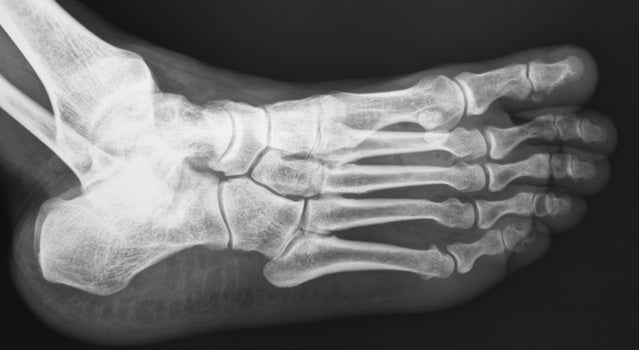
The injury:
Ankle sprains account for 15 to 30 percent of all sports injuries, according to a 2008 study in the Journal of Sports Science and Medicine. Lead author Shigeki Yokoyama wrote that an estimated 23,000 ankle sprains occur daily in the United States, with the total cost of treatment ranging between $318 to $914.
The injury occurs when the ankle twists or rolls outward or inward, tearing the ligaments connecting the three bones that form the joint. Running on uneven surfaces, and playing sports that require jumping or a quick change in direction often cause the injury. They typically take eight to 12 weeks of recovery and ��a previous sprain puts a person more at risk for another sprain—and in the future.
How to prevent it:
“In our preventative trials, we’ve found that training reflexes results in an incredible decrease in injury rate,” says Evert Verhagen, lead author of on optimizing ankle sprain prevention. He says a person can improve balance and coordination by standing on one foot for 30 seconds while brushing their teeth, then switching to the other foot. After that move has been mastered, it’s time for balance board training.
In , a balance board program significantly reduced ankle-sprain risk in volleyball players with histories of previous strains. Try standing on one leg with the knee flexed, keeping the balance board in a horizontal position, and working up to doing 2 x 10 repetitions of a slight squat on each leg.
“Braces and taping are really good preventative treatment as well,” Verhagen says. “But they’re not comfortable so athletes don’t want to wear them.” found that ankle braces and tape reduced sprains by 69 and 71 percent, respectively.
Achilles Inflamation
Ramp up training slowly, or risk being felled by your heel
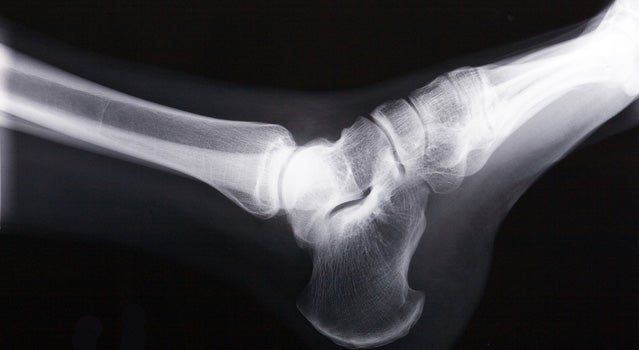
The injury:
Runners have a weak spot at the heel; cited an inflamed Achilles tendon as the most common running associated injury. That study’s authors found that an Achilles tendon overuse injury affected more than 55 percent of 291 elite runners analyzed.
The injury itself causes pain along the Achilles tendon or the back of the heel, which can feel worse in the morning, or during and after exercise, according to the . It can also cause swelling around the tendon, and thickening or stiffness of the tendon itself, sometimes taking several months to mend.
How to prevent it:
“Training errors are the number one cause,” says Dr. Carolyn Smith, a sports medicine physician at Marquette University, and a 2010 U.S. record holder in the 12-hour ultramarathon event. Increasing mileage too quickly, adding too long of a run, or suddenly adding hills or interval training can cause Achilles tendinitis. “A foot with a very high arch can also contribute to Achilles tendinitis,” Smith says. “So can having inflexible calf muscles.”
To avoid the injury, follow a smart training progression and try this eccentric exercise to strengthen calf muscles and stretch tendons at the same time: stand on a step with your heels hanging below the step. Raise your heels up above the step, then slowly lower your heels back down. Repeat 20 times. When that gets too easy, try doing one calf at a time.
IT Band Syndrome
Poor form could be the culprit in creating nagging knee pain
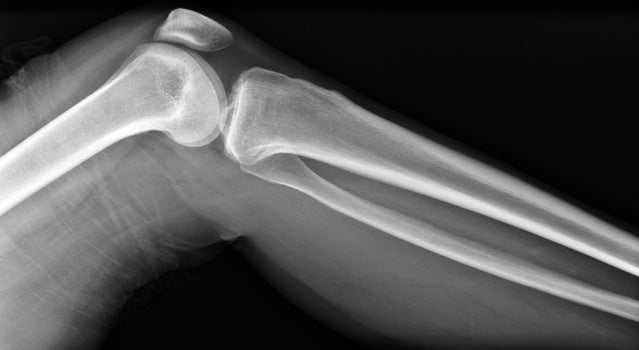
The injury:
IT Band Syndrome is often billed as the most common cause of knee pain, particularly in cyclists, runners, and hikers. The iliotibial band is made up of connective tissue and it runs from the outside of the hip to the outside of the knee, where it can rub against part of the femur and become irritated. ��
How to prevent it:
Several studies, including , have shown that improper form during repetitive exercises can cause an IT band flare up. People who rotate their knees inward while running are particularly prone to IT Band Syndrome. The rotation is thought to increase strain on the IT band, causing it to rub uncomfortably against a part of the femur bone located on the outside of the knee.
Several factors can cause these irritating movements, says Gordon, including fatigue, tight muscles, running on uneven terrain, like on a sloped side of a road, or frequently changing direction while running. An athlete’s natural gait may also be flawed—two of the most common issues come from runners who either rotate their knees inward or sway their hips from side with each stride. On the bike, improper cleat position can be a culprit.
“Always get in a good warm up,” Gordon says. Loosening up the IT band and the muscles that surround it will help keep it from pulling tightly against the upper femur bone. For runners, a warm-up should include a five to 10 minute jog, with some plyometric moves like high knees and skipping thrown in to get the hips moving. Switching up your running terrain can also help because running every day on the same road, with the same slant, can also strain the IT band. Intervals on the track should be run in the third lane because the larger curve puts less stress on the inner leg’s IT band. Running tight curves on the track can aggravate the inner leg’s IT band because it must work harder to keep the leg from swinging toward the outside of the curve,
The jury’s out on , but stretching is always advised, as a tight IT band is more likely rub against that femur bone, causing pain. Try from the Nicholas Institute of Sports Medicine and Athletic Trauma:
1. Standing IT Band Stretch
Start standing upright. Then cross the right leg over the left, and lean to the right, bending at your hip. This will stretch the left IT band. Repeat on the other side. The first stretch in this video shows this technique:
2. On the Ground IT Band Stretch
Lying on your back, lift your right leg over your left leg, keeping your back flat on the ground, and hold it there by placing your left hand on your right knee. Your body should look like an upside down 4, with your right thigh as the horizontal line. Repeat on opposite side. The second stretch in this video illustrates this technique:
��
Rotator Cuff Strain
Focus on high repetition of sport-specific exercises
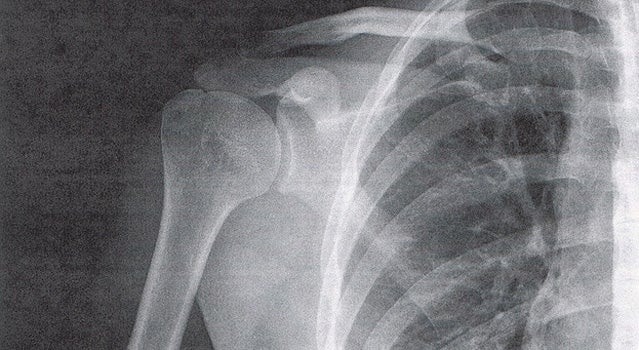
The injury:
Throwing fastballs isn’t the only way to aggravate the four little muscles that hold your shoulder in its socket. “Swimming, too many pull-ups, tennis, gardening, digging, and heavy labor can all cause a strain,” says , a former physician for the U.S. Olympic swim team. He estimates that every year, five to ten percent of people who swim regularly suffer a shoulder injury.
The potential for rotator cuff damage rises with age as the shoulder’s tendons degenerate. If that’s not enough of a reason to focus on prevention, the to surgically repair a torn rotator cuff is $13,000.
How to prevent it:
Strength training is key, but it’s important to make it sport specific. “The typical progression of doing three sets of 10 reps of one exercise with a very heavy weight may be great for manual labor, but it doesn’t help a swimmer,” Loosli says. Instead, focus on a strengthening regimen with a higher amount of repetitions (three sets of 20 or 30 reps) using light weights or exercise bands. While training, if something starts to hurt, stop the aggravating activity immediately. If the pain persists, see a doctor.
4 Rotator Cuff Exercises to Try
can be performed with an exercise band, as shown, or you can start without added resistance and use an exercise band as you get stronger.
1. The Low Five
With your elbow by your side, hold your hand up to form a 90-degree angle between your forearm and your bicep. Keeping your elbow by your side, move the hand away from your body as far as possible, then return to neutral. Repeat 20 times, then do the same thing on the other side.
2. The Question
Hold your arm out to the side so your bicep forms a 90-degree angle with your tosro and with your forearm. Rotate your hand up, as if to ask a question, then back down parallel to the ground. Repeat 20 times, then do the same thing on the other side.
3. The Taxi Hail
Keeping your right arm relatively straight, touch your right hand to your left hip, then up to your side as if asking a question or flagging down a taxi. Repeat 20 times, then do the same thing on the other side.
4. The Clock
Hold your arm straight out to your side, then rotate it so it’s pointing between 1 and 2 o’clock (noon is straight forward). Keeping your thumb pointing down, drop your arm toward your hip, then bring it back up to starting position. Repeat 20 times, then do the same thing on the other side.
Groin Pull
Build core strength to help avoid groin injuries
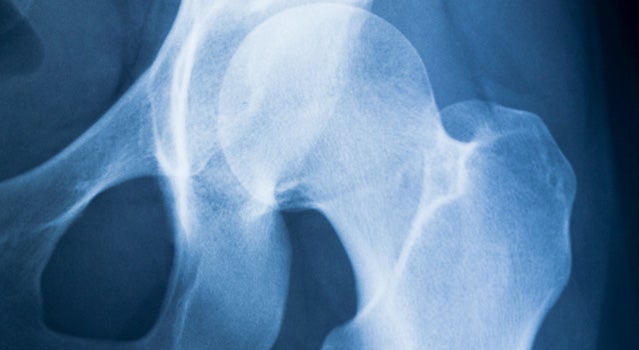
The injury:
Groin injuries are typically associated with sports that require explosive movement like track, soccer, and hockey. But one new fitness routine has led sore athletes to the doctor as well. “More recently, I’ve been seeing CrossFit athletes with groin pain,” said , an Atlanta-based surgeon who specializes in groin injuries and is a certified CrossFit trainer.
Six muscles in the inner thigh, called the adductors, make up the groin. When the adductors are stretched too far, often while jumping, running, or quickly changing direction while running, muscle fibers can get small tears in them. This injury to the muscle fibers is a groin pull. Depending on the severity of the pull, recovery may take 16 weeks or more.
How to prevent it:
Researchers don’t all agree on what might predispose an athlete to a groin pull. blame weak hips, previous injury to the area, and inexperience at specific sports as risk factors. highlight the importance of core strength in preventing groin injuries.
“The theory is that there’s an imbalance between the strength of the lower extremities and the strength of the core,” Hoadley says. “Someone who can maintain a balance between the two is going to have a lower incidence of developing these kinds of injuries.”
Because core muscles and adductors all connect to the pelvis, one muscle group will directly affect the other. “If the adductor can’t keep up with the abs or the abs can’t keep up with the adductor, you’re set up for an injury,” Hoadley says.
Hoadley recommends some of the following dynamic stretching exercises, as well as a strengthening routine that focuses on the core and leg muscles .
1. Front Leg Swing
Swing one leg out in front and behind you. Repeat on each leg.
2. Side Leg Swing
Face a wall. Leaning , swing one leg across your body from side to side. Repeat 10 times on each leg.
��
Shin Splints
Don’t ramp up training too quickly
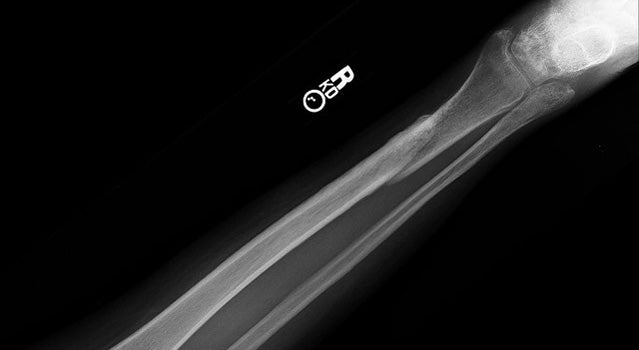
The injury:
Shin splints are often called an overuse injury because they tend to show up after a sudden increase in training volume or intensity, particularly in . The radiating shin pain occurs in up to 20 percent of all runners, according to , and often also affects athletes who run or jump for their sports, including soccer, basketball, hockey, and tennis players.
Even though shin splints occur frequently in athletes who run, nobody is entirely sure of their origin. Some researchers believe they occur when the lining on the outer surface of the tibia (the shin bone) gets inflamed. they come from microscopic fractures in the tibia. Either way, shin splints can last for months at a time, making it difficult to stay active.
How to prevent it:
Because researchers are divided on what’s actually causing the pain, they are equally divided on how to prevent it. that popular prevention methods such as stretching the Achilles tendon, making gradual progressions in training, and wearing shock-absorbing insoles don’t show statistically significant results. And as for the commonly quoted solution of running barefoot on grass, Smith says that might lead to more injuries.
Dr. Smith also recommends strengthening and stretching the calf muscles, and increasing training volume by no more than 10 to 20 percent per week.
Broken Collarbone
Wear your lucky jersey and drink your milk
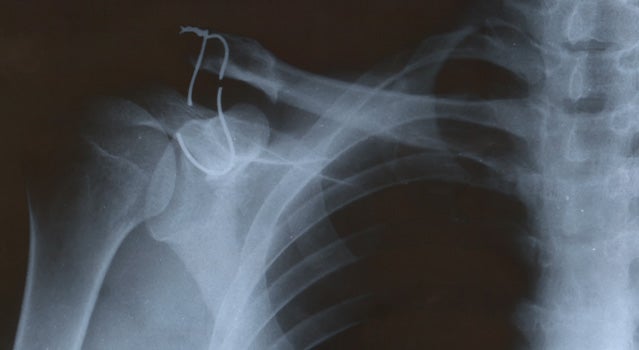
The injury:
The first time broke his left collarbone, around 2002, he was an amateur cyclist just getting into the sport. His chain snapped at a local race, and when he got up out of the saddle to accelerate, he went flying over his handlebars and into the pavement. The second time, he was racing on pro team Liquigas-Cannondale at the in 2011 when his front tire got caught in a storm grate—and he went flying over his handlebars and into the pavement.
“It’s a distinct feeling,” King says about the break. “It’s a very sharp, distinct pain. Even if you’ve never broken a bone before, you’re acutely aware of a broken collarbone.”
Cyclists aren’t the only athletes at risk of cracking a clavicle. A fall into your hand or shoulder while skiing, snowboarding, skateboarding, or trail running could all cause a break and lead to six weeks or more of recovery time. ��
How to prevent it:
“The only way to prevent a broken collarbone is to not crash,” says Dr. Ramin Modabber, a Los Angeles-based orthopedic surgeon, and The Tour of California’s chief medical officer. Collarbone fractures typically result from blunt-force trauma, either directly to the bone, or from falling on an outstretched arm, rather than a muscle or movement imbalance. Therefore, developing excellent sport-specific skills won’t always prevent a collarbone cracking crash; cycling greats like Lance Armstrong, Tyler Hamilton, and Stuart O’Grady have all broken collarbones. A diet rich in calcium and vitamin D, and a strict strength training regimen won’t necessarily prevent a break either, says Modabber, though they can’t hurt.
Runner’s Knee
Build strong quads
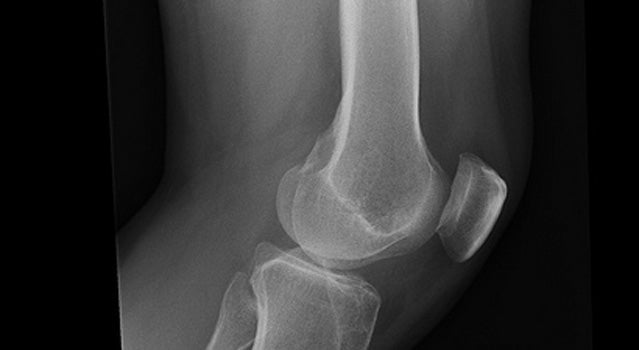
The injury:
Pain under the kneecap, or patellofemoral pain, has been called “Runner’s Knee” because it’s as the most common injury in runners. The injury may also cause pain and swelling around the kneecap. It’s been called the most common injury in sports, with one in four active people suffering from its effects, , including basketball players, hikers, and swimmers.
“Athletes can fatigue the quad muscles, moving the kneecap out of alignment and causing irritation under the kneecap,” says Dr. Alvin Loosli, a former physician for the U.S. Olympic swim team. Exercising with Rrunner’s knee over long periods of time can break down cartilage, leading to problems with arthritis as athletes age. ��
How to prevent it:
People with weak quads are to have patellofemoral pain than those with stronger quads, . Researchers studied about 1,600 U.S. Naval Academy recruits, analyzing their biomechanics and strength before training started, and after to 2.5 years. Forty of those recruits developed runner’s knee, suggesting that weak quads made recruits more likely to develop the injury, as well as weak hamstrings, which made participants 2.9 times more likely to get injured. Flat feet and stiff knees upped injury risk as well. ��
“Make sure the quads are strong,” Loosli says. Swimmers can add fins to their workouts to help strengthen quads, while other athletes can do squats or wall sits. Riding a bike is a great way to tone quads, too. Loosli recommends cycling 35 to 45 minutes twice a week with some intense intervals thrown in to help build quad muscles.
Lower Back Pain
Sit up straight, and a few other things
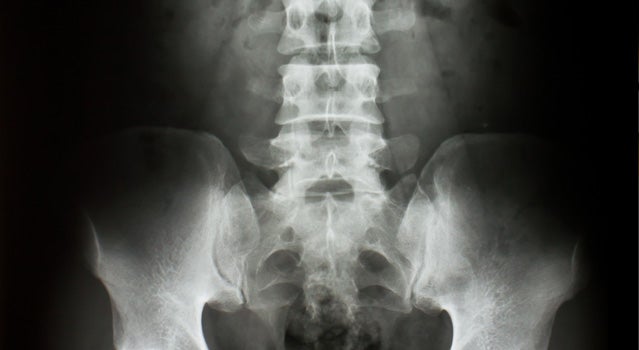
The injury:
Lower back pain is the most common cause of work related disability in the U.S., according to the . Every year, Americans spend more than $50 billion on the problem. Athletes with day jobs might get lower back pain from sitting with poor posture at a desk all day. Pain in the lower back is the most common injury in among cyclists, affecting up to of participants, potentially because prolonged flexed posture in the saddle can strain the lumbar spine.
How to prevent it:
Two words: core strengthening. Cyclists with weak core muscles are more likely to experience lower back pain because weak muscles allow the back to overextend, putting pressure on the lower back instead of distributing pressure throughout the core. Back extensions and abdominal exercises, like planks and sit-ups, help strengthen core muscles, which help keep the spine in a more neutral, supported position. So strengthen up, or risk being forced out of the saddle; in one study, of cyclists with lower back pain lost valuable training time because of the pain.
Improper bike fit may also cause pain. If handlebars are too low, or the top tube is too long, riders will hyperextend their backs, putting excess pressure on the lumbar spine. found that incorrect saddle angle likely contributes to lower back pain in cyclists. Riding too much can also hurt. Cyclists who ride more than 100 miles per week are 3.6 times more likely to experience lower back pain than cyclists who ride less, according to a 2010 .
Tight hip flexors—a result of prolonged sitting, or playing sports in which the thigh is raised toward the chest, like running or cycling—may also be to blame. “When hip flexors get too tight they pull on the back, causing a lot of the back problems in runners,” said Dr. Carolyn Smith a sports medicine physician at Marquette University, and a 2010 U.S. record holder in the 12-hour ultramarathon event. Stretch them out with a cobra yoga pose. ��Lie on your stomach, press down with your palms beneath the shoulders to lift your chest off of the ground as you extend your arms until the elbows are as straight as possible.
A job that requires sitting at a desk all day should be filled with stretching breaks every 15 minutes. A chair with a lumbar support will help ensure that the lower back does not get hyper extended. Roll up a towel and place it behind your lower back if a new chair isn’t a possibility. Doctors at the also recommend adjusting chair height so both feet touch the ground and knees stay level with hips.
Plantar Fasciitis
Keep calves limber and change up training surfaces
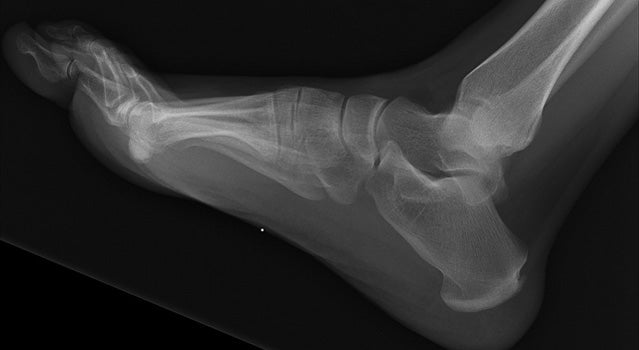
The injury:
Plantar fasciitis affects approximately two million people in this country and sends half of those people to their doctors annually, according to in US Musculoskeletal Review.
Shooting heel pain can occur when the plantar fascia, a thick connective tissue on the bottom of the foot that supports the arch, gets inflamed. The pain often affects people in the morning when they first get out of bed, and can take up to ten months to treat. Plantar fasciitis is often cited as the most common running injury after runner’s knee.
How to prevent it:
“Several things can irritate the plantar fascia,” says Dr. F. Kennedy Gordon, a sports medicine physician for USA Track and Field. “A very high arch, overpronation, or a flat foot can cause irritation. If you have a very tight calf, it will pull on your heel and cause pressure on the plantar fascia.” He adds that always running on hard pavement, or in old shoes, can also contribute to the problem.
that orthotics significantly reduce pain in people who already suffer from plantar fasciitis. Gordon also recommends that runners who race practice running in race shoes before the event. The transition from a cushioned training shoe to spikes or racing flats can be an unwelcome jolt to the musculoskeletal system.
Tibial Stress Fracture
Train at the proper volume and intensity
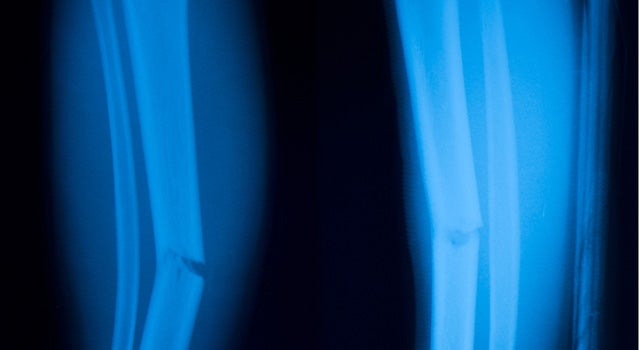
The injury:
The U.S. military has become particularly interested in studying stress fractures. The overuse injury affects up to five percent of male military recruits, and up to 21 percent of females, and costs the Army millions of dollars annually in lost training expenses, .
Because the injury comes from repetitive, excessive stress on the bone, athletes are also at risk. Up to a third of track and field runners will experience a stress fracture at some point, while alpine skiers, basketball players, hikers with heavy packs, and football players often find themselves sidelined as well. Finland’s most successful slalom skier, , struggled with a tibial stress fracture for three years. The tibia, or shin bone, is the most common place to get a stress fracture, making up nearly a quarter of all stress fractures and typically taking six to eight weeks to heal.
How to prevent it:
“Most commonly, training errors may be to blame,” says Dr. Jason Glowney, a Boulder-based sports medicine doctor, and author of in collegiate distance runners. “This can mean that the stress the athlete put on the bone outpaces the body’s ability to remodel or heal the tissue.”
One way to help avoid the injury is to carefully increase training volume and intensity. Many running coaches use the 10 percent rule, increasing a runner’s mileage no more than 10 percent per week. Runners who log more than 25 miles per week are at higher risk for a stress fracture, according to .
Pay attention to diet. “This means getting in an adequate amount of vitamin D and calories for the training levels you’re undertaking,” Glowney says. The adults get 600 IU of vitamin D per day. Fatty fish like tuna and salmon, along with vitamin D fortified foods like milk and breakfast cereals, are good sources of the bone-building vitamin. Make sure you’re taking in enough fuel; use to figure out calorie requirements.
Finally, doctors say that once pain and swelling in the shin begins, athletes should stop training and set up an appointment. “Many athletes will choose to race with stress bone injury and run the risk of that injury becoming a full-blown fracture in itself,” Glowney says. “In these situations the downtime can then become significantly greater and can disrupt an entire season and in some cases an entire career.”
Concussion
Learn the signs and wear protection

The injury:
Football isn’t the only sport plagued by concussions. Cycling, water sports, skiing, and snowboarding rank among the top 10 sports with the most reported head injuries, according to the . There are an sports-related concussions suffered annually in the U.S. The in early 2011 when Lindsey Vonn was cleared to race the super-G at the world ski championships, despite showing signs that she had not recovered from a concussion suffered during a training run six days earlier.
How to prevent it:
In contact sports, governing bodies have turned their efforts to enforcing new rules to lessen the number of head injuries suffered on the field. The NFL launched that outlines the measures they’re taking to improve player safety, including levying heavy fines for helmet-to-helmet contact. For sports like skiing and cycling where athletes suffer head injuries because of an unexpected and potentially uncontrollable crash, prevention becomes more difficult.
Because concussions can occur due to movement of the brain within the skull, helmets are , though they have been shown to . Manufacturers like are trying to improve the helmet’s role in preventing concussion through better helmet design.
Therefore, most research has centered around proper care following a concussion to ensure the injury doesn’t lead to long term health issues. The Centers for Disease Control and Prevention lists difficulty thinking clearly, irritability, and headache among . is typically advised as the best way to recover, and recovery can take months. However some concussions, particularly those that cause a loss of consciousness that lasts more than 30 minutes, can increase an athlete’s risk of getting Alzheimer’s disease later in life, even though the athlete may appear to be healed, according to . ��
“One of the biggest challenges with head injuries is they’re not defined at the time you fall,” says Dr. M. Ramin Modabber, chief medical officer of the Tour of California cycling race. ��“It takes sometimes hours for symptoms to evolve.” It’s important, therefore, to watch for the signs of concussion following a head injury and seek treatment if they show up.
For more information on signs of concussion and when to seek treatment, check out .
Want to learn more about minimizing concussion damage? by Dr. Jeffrey Kutcher, director of the :
